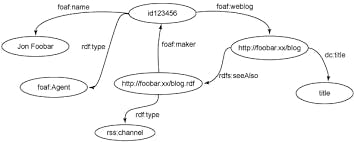This blog will be a 5 part series for complete learning from Beginner to Master on SPARQL queries based upon RDF query model. So this will be the Part I of the series where we will understand the basics of RDF data model how is the data is stored through RDF format.
What is RDF?
RDF is Resource Development Framework is developed by World Wide Web Consortium (W3C) to represent data on the web in a directed, labelled graphical format. This format is different from the classic conceptual model(entity - diagrams or Relational database model). The data is stored in the form of triples which we will discuss later in this blog. The queries used to display the data in RDF model are written in SPARQL query language(SPARQL Protocol and RDF Query Language).
Deep Dive into RDF
Since we will be discussing about RDF in this blog we should have an idea that how it is different from relational database which is used to store data in the form of tables. But what about highly unstructured data in the form of texts,images or any other kind of media? This is where RDF model comes into picture which stores in a text file. And the major advantage of using RDF format is that it can be converted into SQL(structured query language) database and the other way around in the form of semantic triples. Now let's understand What is Triples?
Triples

The triples are in the format subject - predicate - object. The subject denotes the resource, the predicate tells the information about the resource and relation between subject and object.
Let's understand this with the help of an example: Now let's see the example "The sun has the color yellow" there be a text which is stored in the form of triple, so here "The sun" will be the subject, "has the color" will be the predicate and "yellow" will be the object. Now this is similiar to entity - attribute - value classical model where entity(sun),attribute(color),value(yellow).

Triple can be used to store complex network models using semantic networks(through undirected or directed graphs).

That's all for the first article. We will be discussing more about RDF Graphs and how to store data in RDF format. We will be also be learning basic SPARQL queries in the next article.
